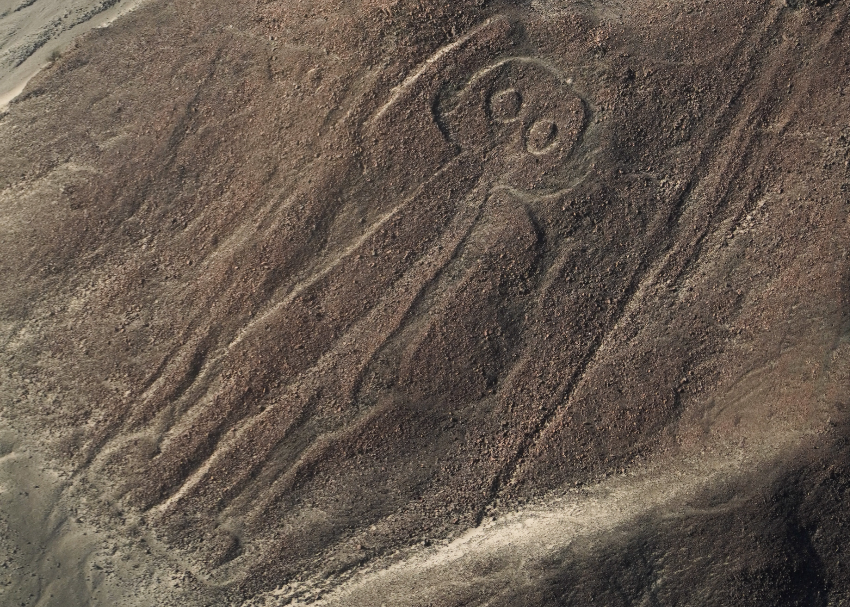When it comes to sites in Peru, Machu Picchu is just the tip of the iceberg, with the country filled with fascinating insights into the continent’s early civilizations. The Incas certainly played a big role, but they’re not the only ones to watch. The Huacaplana pyramid is one of many in Peru that predates the Inca Empire, while the mysterious Nazca Lines have captured people’s imaginations for thousands of years.
To help get you on the right track, here are nine Peruvian sites that are worth your time:
1. Choquequilao
Although three times the size of Machu Picchu, Choquequirao is often referred to as a “mini Machu Picchu” due to its similar architectural style. This remote Inca settlement is located at the confluence of three rivers in southern Peru, deep in the Sierra Vilcabamba Mountains.

It is thought that the Incas took refuge here after the Spanish invasion and made their final effort to regain power there. Accessible only on foot and with only a fraction of the number of tourists that Machu Picchu receives, Choquequirao is arguably Peru’s best-kept secret.
2. Vakkaplana
Made of mud and clay bricks, the Huacaplana Pyramid is a must-see archaeological site in the Peruvian capital. Built by the Lima culture, a civilisation that developed on the Peruvian coast between 700 BC and 200 AD, the pyramid was designed to allow elite priests to demonstrate their religious and political power.

The pyramid has two sides: one for pleasing the gods (look for evidence of small pits used for fish sacrifices) and the other for administration. Small clay structures and huts are believed to have been terraces and courtyards for the clergy. After your visit, enjoy a meal at the Huaca Pucllana restaurant, which overlooks the ruins.
3. Killariumiyok
Killarumiyoq (which means “Moon Stone” in Quechua) is a ceremonial site dedicated to the moon, which the Inca worshipped in addition to the sun, rain, and earth. The site consists of terraces, waterfalls, and stone steps, but the most striking feature is a large calendar carved into an andesite boulder. Is it a sundial or a moondial? No one knows, but the intricacy of the design is impressive considering the Inca had no metal tools.
4. Machu Picchu
Without a doubt Peru’s most famous archaeological site, the Inca citadel of Machu Picchu, took nearly a century to build, and you’ll understand why as you walk along its solid granite walls, which were made from materials that were brought down from the mountains without the use of wheels.

Machu Picchu’s more than 200 structures are set against a backdrop of majestic Huayna Picchu (meaning “young mountain”) and cloud forest. When you hike the Inca Trail and enter Machu Picchu through the Sun Gate, you’re following the original pilgrimage route of the Incas.
5. Nazca Lines
These large geoglyphs carved into the Nazca Desert have inspired conspiracy theories since they appeared 2,000 years ago. The mystery of their meaning, especially the eerie humanoid figures nicknamed “the Astronauts,” is part of their allure. The markings cover nearly 500 square kilometers (190 square miles) of desert, so a helicopter ride is the best way to see images of the various animals, plants, and shapes.

6. Ollantaytambo
Hikers often stop here for the night before beginning their Inca Trail journey, and the climb to Ollantaytambo gives you a vantage point overlooking the old town and the Sacred Valley.

This 15th-century fortress is also home to some of the most important sites of the Inca Empire, namely the Temple of the Sun and the Princess Baths Fountain. End your short hike with a glass of Inca champagne (spoiler alert: it’s a beer brewed from corn) before strolling the cobbled town square.
7. Puyupatamakar
If you need more motivation to hike the Inca Trail, check out Puyupatamaca, also known as the ‘City above the Clouds.’ This majestic citadel is located 600 meters (11,800 feet) above sea level, and you’ll reach it by climbing rugged steps on day three.

But don’t be afraid, at this point you’ve already conquered the Valley of the Dead, the highest point on the hike at 4,215 meters (13,828 feet), so everything else will be a breeze. Plus, the views are breathtaking—and no, it’s not just the altitude. Don’t be afraid Alamed If you meet some of the resident mowers on the grounds!
8. Sacsayhuaman
If you hear someone refer to Cusco as having “hot women,” that’s not what you think. Locals are actually referring to the Inca citadel that guards the empire’s former capital.

Sacsayhuamán is another architectural masterpiece of the civilization, with some of the huge stones used to build the plasterwork three times the height and width of an average human being. Workers used only leather and hemp ropes to haul the stones up the mountain, about 3,700 meters (12,140 feet) above sea level, one by one.
9. Sapantiana Aqueduct
Although the Spanish built this site in the 17th century, it’s often overlooked in Cusco’s San Blas neighborhood and takes its name from a nearby Inca monument. Sapantiana means “unique seat” in Quechua, and it was once an important water source and is now a fun photo opportunity. Pose by the P’ujru stream, which cascades down mossy steps, but don’t get too close or you’ll need to change your clothes.







